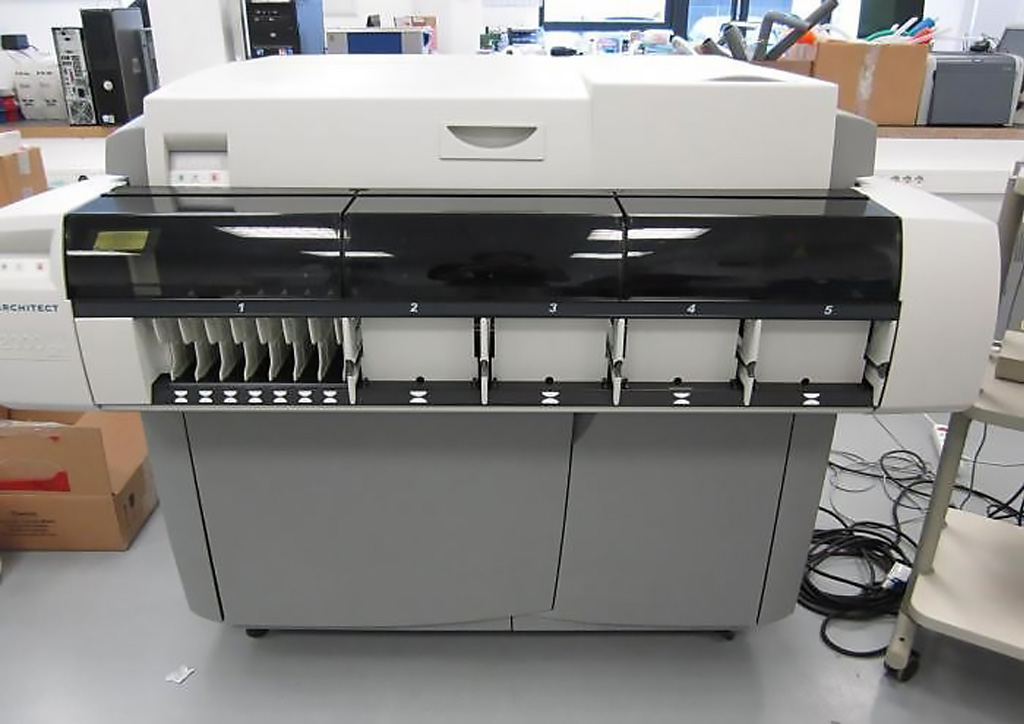Reference Intervals Established for Serum Ferritin in Chinese Adults
By LabMedica International staff writers
Posted on 12 Nov 2019
As the foundation for the interpretation of medical laboratory data, reference intervals (RIs) for analytes are one of the most widely used clinical decision‐making tool. Nevertheless, although measurement of serum ferritin (SF) has largely replaced laboratory assays of serum iron and transferrin or total iron‐binding capacity in clinical practice, there is no gold‐standard method for measuring SF.Posted on 12 Nov 2019
At present, SF can be measured using immunoassays, for example, enzyme‐linked immunosorbent assay (ELISA), electrochemiluminescent immunoassay (ECLIA), chemiluminescent immunoassay (CLIA), or immunoturbidimetric assay. Normally, a small amount of ferritin exists in the peripheral circulating blood and is called serum ferritin.

Image: The Abbott Architect i2000SR immunoassay analyzer (Photo courtesy of Abbott Diagnostics).
Clinical Laboratory Scientists at the Shaoxing Hospital of China Medical University (Shaoxing, China PR) obtained the SF test results of all health examinees (8,913 males aged 18‐93 years and 5,397 females aged 18‐90 years) between December 2010 and April 2019 from their laboratory information system. Venous blood samples were obtained from each study participant after a 12‐hours fasting period and collected into BD vacutainer tubes (Becton Dickinson, Franklin Lakes, NJ, USA).
Serum was separated from the blood by centrifugation at 3,000 rpm for 5 minutes at room temperature (18‐25°C). All specimens were quantitatively determined within two hours of collection on an Abbott Architect i2000SR analyzer (Abbott Diagnostics, Chicago, IL, USA) according to the manufacturer's specifications and following the laboratory standard operating procedures. The detection kits and calibrators were provided by Abbott Diagnostics.
The scientists reported that SF levels in females were significantly different from those in males and showed a weak positive correlation with age. The RIs based on parametric approach in males were 66.12‐561.58 µg/L, whereas in all females were 3.59‐269.59 µg/L, females aged <50 years 3.26‐148.02 µg/L and those aged ≥50 years 17.28‐303.27 µg/L. The RIs based on non‐parametric approach in males were 65.00‐571.37 µg/L whereas in all females were 4.00‐254.00 µg/L, females aged <50 years 4.00‐152.00 µg/L and those aged ≥50 years 16.00‐304.05 µg/L.
The authors concluded that the present study has provided evidence that the RIs for SF in Chinese adults are markedly different from the manufacturer's recommended Rls. In Chinese adult females, the age‐specific RIs must be also taken into account. As a result, the establishment of the sex‐ and age‐specific RIs by indirect method using the data from health examination records for SF in their own laboratory would give a better chance to aid the physician in differentiating or considering treatment of iron‐deficiency anemia or a risk of iron overload than using manufacturer's recommended RIs or adopting RIs from other laboratories. The study was published on November 1, 2019 in the Journal of Clinical Laboratory Analysis.
Related Links:
Shaoxing Hospital of China Medical University
Becton Dickinson
Abbott Diagnostics














